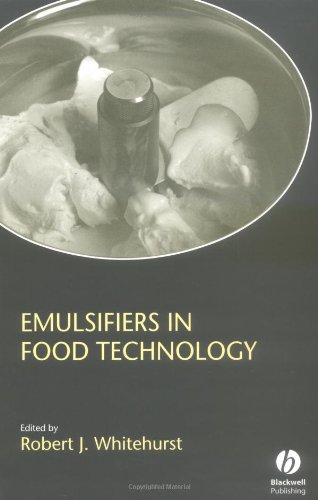Emulsifiers in Food Technology pdf
Par gresham rex le dimanche, juillet 19 2015, 21:38 - Lien permanent
Emulsifiers in Food Technology. Robert J. Whitehurst

Emulsifiers.in.Food.Technology.pdf
ISBN: 1405118024,9781405118026 | 264 pages | 7 Mb

Emulsifiers in Food Technology Robert J. Whitehurst
Publisher: Wiley-Blackwell
Food Today Add oil to water and the two liquids will never mix. Digital technologies are creating major opportunities for the food industry, according to a new report from PricewaterhouseCooper (PwC) and the Grocery Manufacturers Association (GMA). With this in mind, Food Technology Intelligence, Inc. The KGB Agent answer: Emulsifiers bind together food ingredients, like oil and water, keeping them from separating, helping to maintain food freshness and quality, and can help prevent mould growth if fat and oil do separate. At least not until an emulsifier is added. To complement this, we provide application from the global Food industry. Studentship in Food Technology for PhD Applicants at Lund University , Sweden Study Subject:Food Technology Employer:Lund University Level:PhD ScholaPhD Studentship in Food Technology, Sweden - 2013 2014 Scholarship Positions. Has revised its report: Advances in Food Chemistry: Proteins, Lipids, Emulsifiers, Antioxidants. Emulsifiers are molecules with one water-loving (hydrophilic) and one oil-loving (hydrophobic) end. Palsgaard is a specialist in the manufacture of emulsifiers, stabilizers and other specialized ingredients for the food industry. They make it possible for water and oil to become finely dispersed in each other, creating a stable, homogenous, smooth emulsion. Starch nanocrystals of specific sizes and hydrophobicity will be designed and used as colloidal particles to generate and stabilise Pickering type emulsions. However, the main On the other hand, food additives may only be authorized if [4](1)there is a technological need for their use;(2)they do not mislead the consumer;(3)they present no hazard to the health of the consumer. The food additive named polyglycerol polyricinoleate (PGPR) and identified with the code E-476 (PGPR) is used as emulsifier in tin-greasing emulsions for the baking trade and for the production of low-fat spreads.
Paradigms of Artificial Intelligence Programming: Case Studies in Common LISP book
Continuum Theory of Plasticity ebook
Logic and Computer Design Fundamentals (4th Edition) Solutions textbook. book download